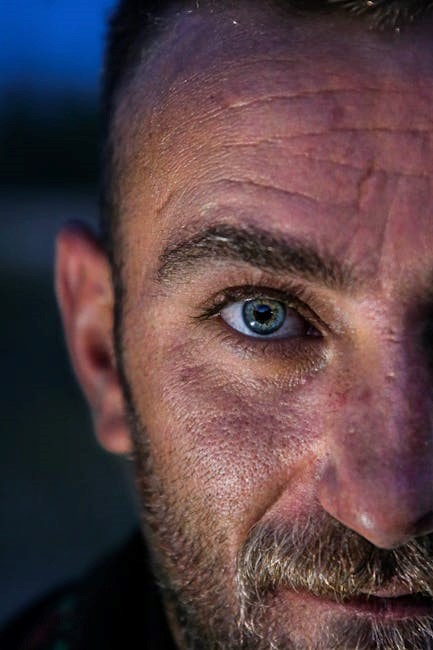Toni Morrison’s The Bluest Eye is a haunting debut novel exploring themes of beauty, race, and trauma in 1940s Lorain, Ohio. It follows Pecola Breedlove’s tragic journey, delving into internalized racism and societal oppression, making it a powerful critique of American culture and identity.
1.1 Background and Publication History
The Bluest Eye, Toni Morrison’s debut novel, was published in 1970 by Holt, Rinehart, and Winston. Initially rejected by several publishers, it gained recognition for its raw exploration of race, beauty, and trauma. Set in Morrison’s hometown of Lorain, Ohio, the novel reflects her childhood experiences and societal observations. The story centers on Pecola Breedlove, an African American girl grappling with internalized racism and beauty standards. The book marked Morrison’s entry into literature, blending lyrical prose with a poignant critique of American culture, setting the stage for her future acclaim.
1.2 Setting: Lorain, Ohio, and Its Significance
Lorain, Ohio, Toni Morrison’s hometown, serves as the backdrop for The Bluest Eye. The city’s post-Depression era setting reflects economic hardship and racial tensions. Lorain’s industrial landscape and segregated neighborhoods mirror the societal fragmentation experienced by its African American community. Morrison’s personal connection to the city infuses the novel with authenticity, using Lorain as a microcosm for broader American issues. The setting underscores themes of isolation and marginalization, highlighting how environment shapes identity and perpetuates inequality.
1.3 Summary of the Novel
The Bluest Eye recounts the tragic tale of Pecola Breedlove, an 11-year-old African American girl in 1940s Lorain, Ohio; Pecola, mocked for her dark skin, yearns for blue eyes, symbolizing societal beauty standards. Her family’s dysfunction and community’s racial self-loathing exacerbate her torment. The narrative, interwoven with Claudia MacTeer’s childhood memories, exposes the psychological toll of internalized racism. The novel culminates in Pecola’s devastating rape by her father, leading to madness and the community’s collective guilt, offering a poignant critique of racial and beauty ideals.

Themes in The Bluest Eye
The novel explores major themes, including internalized racism, self-hatred, beauty standards, trauma, and socioeconomic disparities, critiquing societal norms and their devastating impact on Black communities.
2.1 Internalized Racism and Self-Hatred
Internalized racism and self-hatred are central themes in The Bluest Eye. Pecola Breedlove’s desire for blue eyes symbolizes her internalization of white beauty standards, reflecting societal racism. The Breedloves, particularly Cholly and Pauline, struggle with self-worth, perpetuating cycles of abuse and neglect. Morrison illustrates how systemic racism distorts self-perception, leading to self-loathing and destructive behaviors within the Black community. This theme underscores the psychological toll of racial oppression on individuals and families, making it a powerful critique of American society.
2.2 Beauty Standards and Their Impact
In The Bluest Eye, Morrison examines the destructive impact of societal beauty standards on Black individuals. Pecola Breedlove’s obsession with blue eyes embodies her internalization of white beauty ideals, perpetuated by media and culture. This pursuit of an unattainable beauty reflects the broader societal devaluation of Black features. Morrison highlights how these standards lead to self-hatred and a distorted sense of self-worth, particularly among Black girls. The novel critiques the correlation between whiteness and beauty, exposing its role in perpetuating racial oppression and personal suffering.
2.3 Trauma and Its Effects on Individuals
Trauma is a pervasive theme in The Bluest Eye, shaping the lives of characters like Pecola, Cholly, and Pauline. Morrison explores how generational and societal trauma manifest in individuals. Pecola’s physical and emotional abuse lead to her psychological disintegration, while Cholly’s traumatic childhood fuels his destructive behavior. The novel illustrates how unresolved trauma can perpetuate cycles of pain, affecting not only individuals but also their families and communities. Morrison’s portrayal underscores the long-lasting effects of trauma and its intergenerational impact.
2.4 Socioeconomic Disparities in the Black Community
Toni Morrison’s The Bluest Eye examines the profound impact of economic inequality on the Black community. The Breedloves, living in poverty, face marginalization and despair, while the MacTeers, though also poor, maintain dignity and resilience. Morrison contrasts these families to highlight how socioeconomic status affects self-perception and opportunities. The novel underscores how systemic racism perpetuates financial instability, contributing to internalized racism and self-hatred. This disparity is central to the characters’ struggles, reflecting broader societal issues of the time.

Major Characters
The novel explores the lives of Pecola Breedlove, Claudia MacTeer, Frieda MacTeer, Pauline Breedlove, and Cholly Breedlove, each representing unique struggles and resilience within their community.
3.1 Pecola Breedlove: The Tragic Heroine
Pecola Breedlove is the novel’s central figure, an 11-year-old African American girl yearning for blue eyes, symbolizing her desire to fit white beauty standards. Abandoned by her family and society, Pecola endures unimaginable abuse, including rape by her father, Cholly, leading to her pregnancy and eventual madness. Her tragic story highlights the devastating effects of internalized racism and societal rejection, making her a profound symbol of the destructive nature of beauty ideals and racial oppression in America.
3.2 Claudia MacTeer: The Narrative Voice
Claudia MacTeer serves as the primary narrator, offering a retrospective account of Pecola Breedlove’s story. Her voice alternates between her childhood perspective and adult reflection, providing depth and insight into the events. Claudia’s narrative contrasts with the omniscient voice, creating a layered exploration of themes. Her innocent yet critical viewpoint underscores the novel’s examination of beauty, race, and trauma, making her an essential storytelling element in Morrison’s exploration of identity and societal conditioning.
3.3 Frieda MacTeer: Sister and Witness
Frieda MacTeer, Claudia’s older sister, plays a crucial role as a witness to Pecola’s story. Her character provides a complementary perspective to Claudia’s, offering a slightly more mature understanding of events. Frieda’s interactions with Pecola highlight the complexities of childhood empathy and judgment. Through her observations, Morrison underscores themes of family dynamics and societal influences, while Frieda’s evolving awareness reflects the broader narrative’s exploration of identity and moral growth in a troubled community.
3.4 Pauline Breedlove: Motherhood and Unhappiness
Pauline Breedlove, Pecola’s mother, embodies the tragic consequences of internalized racism and emotional detachment. Her unhappiness stems from a lifetime of societal rejection and personal failures, leading to a distorted view of love and motherhood. Pauline’s preference for her white employers’ child over her own daughter reflects the self-hatred ingrained by years of oppression. Her story is one of missed opportunities for connection, highlighting the devastating impact of racial and economic disparities on black women’s lives and their ability to nurture their families.
3.5 Cholly Breedlove: Fatherhood and Its Failures
Cholly Breedlove, Pecola’s father, is a complex figure whose failures as a parent stem from his own traumatic past. Abandoned as a child and shaped by racism, Cholly struggles with alcoholism and emotional instability. His inability to protect or nurture his family, culminating in horrific acts of abuse, reflects the cyclical nature of trauma. Morrison portrays Cholly with both criticism and empathy, illustrating how societal oppression can destroy individual potential and perpetuate violence, leaving lasting scars on his family and community.

Narrative Structure
The novel uses non-linear storytelling and dual narrators, Claudia and an omniscient voice, to explore themes and depth, enhancing the emotional impact effectively.
4.1 Non-Linear Storytelling
Toni Morrison employs a non-linear narrative structure in The Bluest Eye, blending past and present through Claudia’s retrospective narration as an adult. The omniscient narrator intertwines these perspectives, creating a layered exploration of Pecola’s tragic life. This technique allows Morrison to gradually reveal the depths of Pecola’s suffering, emphasizing the long-lasting impact of her experiences. The non-linear style mirrors the fragmented nature of the characters’ lives, offering a poignant reflection on trauma, memory, and the passage of time during the Great Depression and its aftermath.
4.2 Dual Narrators: Claudia and the Omniscient Voice
The Bluest Eye features dual narration, combining Claudia MacTeer’s childhood memories with an omniscient narrator. Claudia’s perspective offers a personal, emotional account, while the omniscient voice provides broader context and insight. This duality enriches the narrative, allowing Morrison to explore themes from multiple angles. The interplay between Claudia’s innocence and the omniscient narrator’s objectivity deepens the novel’s emotional impact, while the shift between these voices underscores the complexities of memory and societal critique in 1940s Lorain, Ohio.
4.3 Symbolism of Seasons and Time
The novel employs seasonal shifts to mirror the emotional and psychological states of its characters. Spring, often symbolic of renewal, contrasts sharply with the despair and violence in Pecola’s life. Morrison uses time to explore memory and trauma, blending past and present. The cyclical nature of seasons underscores the inevitability of tragedy, while the passage of time highlights the characters’ entrapment in their circumstances. This temporal structure reinforces the novel’s themes of inevitability and the destructive power of societal norms.

Historical Context
Set in 1940s Lorain, Ohio, The Bluest Eye reflects the Great Depression’s impact on Black communities and the pervasive racism of the era, shaping the novel’s tragic narrative.
5;1 The Great Depression and Its Impact on Black Communities
The Great Depression exacerbated economic and racial disparities in Black communities, as seen in The Bluest Eye; Lorain, Ohio, the novel’s setting, reflects this hardship, with limited job opportunities and widespread poverty. Black families faced systemic exclusion from relief programs, deepening their struggles. This economic backdrop shapes the Breedloves’ instability and the community’s fractured social fabric, highlighting how racial and class disparities intensified during this period, leaving lasting scars on individuals and families.
5.2 Racism in 1940s America
In 1940s America, racism was deeply entrenched, perpetuating segregation and systemic inequality. The novel portrays a society where Black individuals were dehumanized and marginalized, forced to internalize white beauty standards. Pecola Breedlove’s desire for blue eyes symbolizes the devastating impact of racial indoctrination, as she seeks validation through unattainable white ideals. Morrison highlights how racism eroded self-worth, fostering self-hatred and division within the Black community. The era’s oppressive environment shaped the characters’ lives, emphasizing the psychological toll of racial oppression and its intergenerational consequences.

5.3 The Influence of Morrison’s Hometown, Lorain, Ohio
Toni Morrison’s hometown of Lorain, Ohio, significantly influenced The Bluest Eye. The city’s industrial landscape and racial tensions shaped the novel’s setting. Morrison drew from her childhood experiences, depicting Lorain as a place where economic hardship and segregation intertwined. The fictionalized version of her hometown serves as a backdrop for Pecola Breedlove’s tragic story, reflecting the stark realities of Black life in midwestern America during the 1940s. Lorain’s cultural and social dynamics are woven into the narrative, adding authenticity to the characters’ struggles and the broader themes of the novel.

Literary Devices
Toni Morrison employs rich literary devices in The Bluest Eye, including poetic prose, vivid imagery, and stream-of-consciousness narration. These elements enhance the novel’s emotional depth and complexity.
6.1 Use of Imagery and Metaphor
Toni Morrison’s vivid imagery and metaphors in The Bluest Eye create stark visual representations of characters’ internal struggles. For instance, Pecola’s desire for blue eyes symbolizes her longing for societal acceptance. Morrison’s imagery contrasts the beauty of nature with the ugliness of human cruelty, emphasizing themes of race and identity. Her metaphors, such as comparing Pecola to a wounded bird, deepen the emotional impact, making the reader confront the harsh realities of internalized racism and self-hatred. This technique underscores the novel’s exploration of beauty, trauma, and self-perception.
6.2 Stream-of-Consciousness Narration
Toni Morrison employs stream-of-consciousness narration in The Bluest Eye to delve into the inner lives of her characters, creating a fluid, unstructured flow of thoughts and emotions. This technique allows readers to experience the profound psychological and emotional struggles of characters like Pecola and Claudia firsthand. Morrison’s use of this narrative style bridges the gap between past and present, blending memories with current events to highlight the lasting impact of trauma and societal conditioning on individual minds.
The non-linear, introspective nature of the narration enhances the novel’s exploration of identity, memory, and internal conflict, making it a powerful tool for conveying the complexity of human experience.
6.3 The Role of Dialogue in Character Development
Dialogue in The Bluest Eye serves as a vital tool for character development, revealing the complexities and nuances of each individual. Through conversations, Morrison exposes the emotional depths of characters like Pecola, Claudia, and Pauline, highlighting their struggles with identity and societal expectations. The interactions between characters often underscore themes of internalized racism and socioeconomic disparities, providing insight into their motivations and inner worlds. Morrison’s use of dialogue not only advances the plot but also deepens the reader’s understanding of the characters’ psychological states and relationships.

Reception and Controversies
The Bluest Eye sparked intense debates due to its graphic content and exploration of sensitive themes. It faced bans in schools and criticism for its explicit scenes, yet remains a significant work in American literature, highlighting societal issues and fostering crucial conversations about race and identity.
7.1 Initial Reception and Reviews
The initial reception of The Bluest Eye was mixed, with some praising its lyrical prose and raw honesty, while others criticized its graphic content. Despite early controversy, the novel gained critical acclaim for its unflinching portrayal of racism and its impact on Black communities. Reviewers noted Morrison’s bold narrative style and her ability to evoke powerful emotions, establishing her as a major literary voice. The novel’s exploration of sensitive themes sparked important discussions about race, identity, and societal beauty standards.
7.2 Banned Book Controversies
The Bluest Eye has faced numerous bans due to its explicit content, particularly a graphic rape scene. Schools and libraries have challenged the book, citing its mature themes as inappropriate for young readers. Despite these controversies, the novel remains widely studied, with supporters arguing its literary value and societal relevance. The bans have ironically heightened its visibility, sparking debates about censorship and the importance of addressing uncomfortable truths in literature.
7;3 Cultural Impact and Legacy
The Bluest Eye has left an indelible mark on American literature and culture. Its unflinching portrayal of race, beauty, and trauma has resonated with readers globally, inspiring countless adaptations, analyses, and discussions. The novel’s exploration of internalized racism and societal oppression continues to influence contemporary conversations about identity and justice. Toni Morrison’s work remains a cornerstone of academic curricula, ensuring its themes and messages endure for future generations, solidifying its legacy as a seminal work in the canon of African American literature.
Adaptations and Interpretations
The Bluest Eye has been adapted into stage productions and analyzed in academic circles, showcasing its enduring relevance and emotional depth, inspiring new interpretations of Morrison’s work.
8.1 Stage Adaptations
Toni Morrison’s The Bluest Eye has been adapted into powerful stage productions, such as Lydia Diamond’s play directed by Awoye Timpo. The Huntington’s 2022 production featured Jason Ardizzone-West’s set design and costumes by Dede Ayite and Rodrigo Muñoz. This adaptation ran from January 28 to March 13, with high demand leading to extensions until March 26. The play captures the novel’s emotional depth, exploring themes of identity and trauma. Its success underscores the enduring relevance of Morrison’s work, resonating with audiences through its poignant storytelling and visual artistry.
8.2 Film and Audiobook Versions
While The Bluest Eye has not been adapted into a major film, its impact extends through audiobook versions. These narrations bring Morrison’s lyrical prose to life, capturing the emotional depth of Pecola’s story. Professional voice actors deliver powerful performances, enhancing the novel’s poignant themes. Audiobooks have made the story accessible to a broader audience, ensuring its relevance in modern times. Despite the absence of a film adaptation, the novel’s message resonates through these audio interpretations, maintaining its cultural and literary significance. Morrison’s work continues to inspire new generations.
8.4 Academic and Literary Analysis
Academic and literary analyses of The Bluest Eye focus on its exploration of internalized racism, beauty standards, and trauma. Scholars highlight Morrison’s use of non-linear narrative structures and dual narrators to convey the fragmented nature of memory. The novel’s themes of identity, particularly in the context of Black experiences, have been extensively studied. Literary critics also examine Morrison’s lyrical prose and its ability to evoke emotional depth. These analyses underscore the novel’s significance in African American literature and its continued relevance in contemporary studies of race and identity.

Toni Morrison’s Writing Style
Toni Morrison’s writing style in The Bluest Eye is lyrical and evocative, blending poetic prose with stream-of-consciousness narration. Her work explores memory and identity through vivid imagery and layered storytelling, creating a profound emotional resonance.
9.1 Lyricism and Poetic Prose
Toni Morrison’s writing in The Bluest Eye is characterized by a rich, lyrical quality that borders on poetry. Her prose is both evocative and haunting, employing vivid imagery and metaphors to convey the profound emotional depth of her characters. Morrison’s use of language is not merely decorative but serves to underscore the novel’s themes of beauty, trauma, and identity. Her poetic style creates a rhythm that immerses readers in the world of Lorain, Ohio, while also amplifying the psychological complexity of Pecola’s tragic journey.
9.2 Exploration of Memory and Identity
Toni Morrison masterfully intertwines memory and identity in The Bluest Eye, using non-linear storytelling to explore how past experiences shape self-perception. Through Claudia’s retrospective narrative, Morrison examines how memories of childhood trauma influence adult understanding. Pecola’s fractured identity, shaped by internalized racism and abuse, is revealed through fragmented recollections, emphasizing the psychological toll of societal rejection. Morrison’s approach to memory as fluid and subjective underscores the novel’s themes of racial and personal identity, creating a nuanced exploration of how the past inheres in the present.
9.3 The Use of Multiple Perspectives
Toni Morrison employs multiple perspectives in The Bluest Eye to create a layered narrative, offering diverse insights into the characters’ experiences. The dual narration—Claudia’s personal, reflective voice and an omniscient narrator—provides both intimacy and breadth. This technique allows Morrison to explore themes like internalized racism and beauty standards through contrasting viewpoints. The interplay of these perspectives enriches the reader’s understanding, highlighting the complexity of individual struggles and societal influences. By presenting varied voices, Morrison humanizes her characters, making their pain and resilience deeply relatable and profound. This storytelling approach underscores her exploration of identity and trauma.

Educational Significance
The Bluest Eye is widely studied in schools for its exploration of race, class, and identity. It encourages critical thinking and sparks important discussions, despite controversies.
10.1 Teaching The Bluest Eye in Schools
The Bluest Eye is often included in high school and college curricula for its exploration of race, identity, and societal beauty standards. Educators use it to foster critical discussions about internalized racism, trauma, and socioeconomic disparities. The novel’s complex themes and vivid imagery provide rich material for analysis. However, its explicit content, including a rape scene, has led to controversies and bans in some schools. Despite challenges, it remains a valuable tool for teaching literary analysis and promoting empathy and understanding of marginalized experiences.
10.2 Study Guides and Analysis
Study guides for The Bluest Eye provide in-depth analyses of themes, characters, and literary devices. They often include chapter summaries, discussion questions, and historical context to aid understanding. These resources highlight Morrison’s exploration of internalized racism, beauty standards, and trauma. Many guides also offer insights into the novel’s non-linear structure and dual narration. Academic analyses further explore the cultural and psychological dimensions of the text, making it easier for readers to engage with its complex themes and appreciate Morrison’s lyrical prose.
10.3 Discussion Questions for Readers
Discussion questions for The Bluest Eye encourage readers to explore its themes and characters deeply. Examples include: How does Pecola’s desire for blue eyes reflect societal beauty standards? What role does trauma play in shaping the characters’ lives? How does the novel’s non-linear structure impact its narrative? What message do you think Morrison conveys about internalized racism? How does Claudia’s perspective differ from the omniscient narrator? These questions help readers analyze the novel’s complex themes and their relevance to contemporary issues.
The Bluest Eye remains a profound exploration of identity, beauty, and trauma, cementing Toni Morrison’s legacy as a literary icon. Its poignant themes continue to resonate deeply.
11.1 The Bluest Eye’s Enduring Legacy
The Bluest Eye stands as a seminal work in American literature, offering a searing critique of racial identity and beauty standards. Morrison’s unflinching portrayal of trauma and internalized racism continues to resonate, making the novel a cornerstone of academic and cultural discourse. Its exploration of systemic oppression and personal tragedy has influenced countless authors and adaptations, ensuring its relevance. Despite facing censorship, the novel remains a powerful testament to Morrison’s genius, enduring as a vital exploration of humanity and society. Its legacy endures, challenging readers to confront uncomfortable truths.
11.2 Reflections on Morrison’s Contribution to Literature
Toni Morrison’s work, particularly The Bluest Eye, has left an indelible mark on American literature. Her unflinching exploration of race, identity, and trauma reshaped the literary landscape, offering a powerful voice to marginalized narratives. Morrison’s lyrical prose and profound insights earned her the Pulitzer Prize, the Nobel Prize, and a lasting legacy. Her ability to confront uncomfortable truths and challenge societal norms has influenced generations of writers and readers, solidifying her place as one of the most significant authors of the 20th century.
11.3 Final Thoughts on the Novel’s Relevance
The Bluest Eye remains a poignant exploration of race, beauty, and trauma, resonating deeply with contemporary issues. Morrison’s unflinching portrayal of internalized racism and societal beauty standards continues to challenge readers, making it a vital text for understanding America’s cultural landscape. Its emotional depth and raw honesty ensure its relevance, urging readers to confront uncomfortable truths about identity and oppression. As a work that bridges the past and present, The Bluest Eye endures as a powerful commentary on human experience and societal norms.
